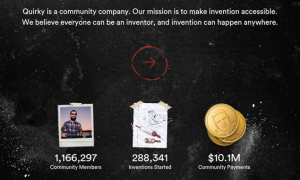Marketers talk a ton about the importance of good homepage design. But if you’re doing inbound marketing well, your homepage won’t usually be your audience’s starting point when they visit your website.
Typically, it’s your blog posts and content offers that will pull people in and get them to start travelling across your site to learn more. This is how inbound works for you, on your website, 24 hours a day, 7 days a week, 365 days a year. So if your homepage is going to be bypassed more often than not, you need set up your interior pages to show your visitors what they’re looking for, and to drive them down the conversion pathway.
Now, I’m not referring to blog posts and landing pages; they have their own unique functions and best practices. Your interior pages are another beast altogether.
Your website’s interior pages are there to inform and guide, so you need to take care in how you plan and build them out. Here’s how…
One Single Goal
While your homepage may have the space to address multiple needs, questions or personas, your interior pages work to refine their content to address a single purpose. For instance, a homepage that showcases all of your services at a glance vs. an interior page that features only one of those solutions.
Learn How to Easily Create Mind-Blowing Content with Our Free eBook.
If you have more than one goal on a single page, things can quickly become cluttered – visually – while the message you are trying send your visitors may get lost.
Take the time to plan out what you want the core focus of that page to be, and craft everything else around it – copy, images and graphics, content offers, and calls-to-action (CTAs). Allow your goal to serve as the starting point for everything that will end up on that page.
Keeping the spotlight on one single pain point or topic will give you the freedom to share as many or as few details as needed to help your visitors see that you have the answers they’re looking for.
Information
All other webpage elements aside, your main focus is the copy itself. What is the message you need to get across, and what is the knowledge you are trying to share with your audience?
The content is why your visitors landed on a particular page in the first place, so make sure you provide them with the information they came looking for.
Meanwhile, the length of your content should be based on your persona. How much are they willing to read? What do they need to know, and how detailed do you need to get?
If you need to write a lengthy couple of paragraphs for the purposes of clarity, do so, but prioritize the content that people are coming to that page for.
Even with long blocks of text, there are ways to call out important details. Simply providing extra white space around key info, or making sure that the most pertinent info is placed at the top of the page, will help ensure your audience sees what they need.
Also, don’t go overboard with bolding or italicizing things. (Because if everything is important, nothing is, right?) However, do use those points of emphasis where applicable if they help the reader to further understand your content.
Conversion Offer
Please note that I wrote “offer” – there’s no plural. And for good reason.
Just as your interior pages should only have one goal, you should really limit your use of CTAs and big content offers – ebooks, case studies and the like.
Let’s say you have a page that focuses on your company’s key service offering. A good content offer for this page would be relevant to the topic, but also well-placed. It should be an offering that your audience will be ready to accept or learn more about at that point in their journey.
If you have too many content offers, how will your audience know which one is the correct next step that they need to take? As much as your website visitors want the freedom to explore at their leisure, they also crave direction toward an obvious action. So telling them to do multiple things at once can be off-putting and confusing.
If you’re truly stuck between two equally amazing content offers, smart CTAs can help you give your visitors options, while not overwhelming them with too many at one time.
Images and Graphics
You don’t have to go nuts with the stock photos. In fact, please don’t overdo it and showcase 10 extra-cheesy stock photos for no reason other than to take up space.
But images do have a purpose.
They help to show what kind of company you are – your business’ brand. Are your photos serious with cooler tones, or are the bright and colorful? Do they give your visitors a feel of what your office and team are like?
Icons and other kinds of graphics can serve this purpose as well. Photography and graphics both give you a chance to present your company’s brand they way you want to – crisp and modern, like Squarespace, or fun and quirky, like Dropbox. It’s all in what graphics you choose and how you use them.
Optimization
Search engine optimization is the dash of salt in a fresh batch of cookies. You won’t see it when all is said and done, but you’ll know it’s there when you’ve done it right. And when it’s not done well, the results are bitter and sure to put a frown on your face.
Always take the time to strategize how your pages will be optimized, from keywords and meta descriptions to headlines and URLs.
Building out your plan of attack first will help to save you headaches down the line, during page development, and also afterward, when your boss wants to know how the page you built is performing.
Decide early on what long-tail keywords you are going to focus on, so that you can be sure they will actually be found within your content. Plus, there’s nothing worse than telling your copywriters to shoehorn critical keywords after everything has already been written. (Hello, awkward keyword stuffing.)
And keep it natural. While it’s great to please Google, your real job is to write for the visitors who are coming to your website. Google only wants your audience to have the best possible experience on your website, after all, so make your focus all about the people.
Relevancy
Rather than risk being redundant, I stopped myself from adding the word “relevant” to the beginning of each of the above titles. That said, I want to be clear that all of the things that you place on any web page need to ultimately be relevant to the persona you are trying to reach.
Images, copy, CTAs and keywords all need to be in alignment with your key goal for that single page. All of these elements serve great purposes, but to make the most out of your website – your tireless, 24/7 employee – align their functionality to work in unison and take things to the next level.
Refine and Repeat
Your entire website – homepage, landing pages, blog posts, interior pages – is all just a continual work in progress. Even after you’ve spent months having it redone, it’s important to keep your website fresh with new content and to not let it sit and gather digital cobwebs.
Use analytics to see what’s working and what doesn’t. Tools like HotJar can show you whether people are engaging with your content, and ones like Google Analytics and HubSpot can show if people are clicking CTAs to download your premium content offers.
Take advantage of the plethora of tools available across the internet to see how you can make your website even more successful. Even better, continually refine your site and all of the above best practices as your online marketing strategy grows and develops over time.
Digital & Social Articles on Business 2 Community
(43)
Report Post






